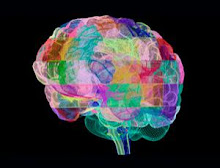THE most celebrated molecule in biology - the DNA double helix - might owe its shape to a mysterious quantum property called entanglement.
In recent years, animals have been shown to use quantum processes to their advantage. For example, some birds' eyes use quantum trickery to "see" the Earth's magnetic field, and light-harvesting molecules in algae and bacteria rely on quantum processes to transfer energy efficiently. Now it seems the blueprint of life could also owe its functioning to such phenomena.
DNA consists of two strands, each made of a chain of nucleotides, or bases. The bases in each strand link up like the rungs of a ladder, with each rung called a base pair, and the whole thing is twisted into a double helix. The helical shape is vital to DNA's stability, as it prevents it from disintegrating inside a cell.
To see if quantum processes play a role in determining the shape of DNA,Elisabeth Rieper of the National University of Singapore and colleagues modelled each base pair as a cloud of electrons that oscillates around a positively charged nucleus. The team found that quantum entanglement between these clouds helped DNA to maintain its helical structure.
Entanglement is a quantum property where two or more objects are linked and in "superposition" - existing in many possible states at once. When this happens, it is impossible to describe the state of each object individually - the entangled objects must be considered as a whole.
In their model, electrostatic forces caused the electron clouds of adjacent base pairs to interact with each other, an essential prerequisite for entanglement to occur. Each cloud has the largest effect on its neighbours, with its influence dropping with distance.
When the researchers analysed the DNA without its helical structure, they found that the electron clouds were not entangled. But when they incorporated DNA's helical structure into the model, they saw that the electron clouds of each base pair became entangled with those of its neighbours (arxiv.org/abs/1006.4053v1). "If you didn't have entanglement, then DNA would have a simple flat structure, and you would never get the twist that seems to be important to the functioning of DNA," says team member Vlatko Vedral of the University of Oxford.
If you didn't have entanglement you would not get the twist that is vital to DNA's functioning
"It's a very nice step forward, a new way of looking at DNA," says Sandu Popescu, who studies entanglement in biological systems at the University of Bristol, UK. But whether the entanglement has any biological relevance remains to be proven, he adds.
However, Aleksei Aksimentiev of the University of Illinois at Urbana-Champaign is sceptical that quantum effects are the sole reason for the helical structure. He points out that the way the helical structure shields the hydrophobic bases from water inside a cell is already considered a viable explanation for DNA's shape.
To better understand the significance of entanglement to DNA's stability, the quantum effect "should be compared to other factors that are known to stabilise DNA structure and give the molecule its functionality", Aksimentiev says.
It's also unclear whether entanglement affects the information content of DNA. Could it hinder how information is read or lead to faster information processing, as has been demonstrated in quantum computing? "At this stage I don't think we can answer either of these questions," Vedral says.

No comments:
Post a Comment